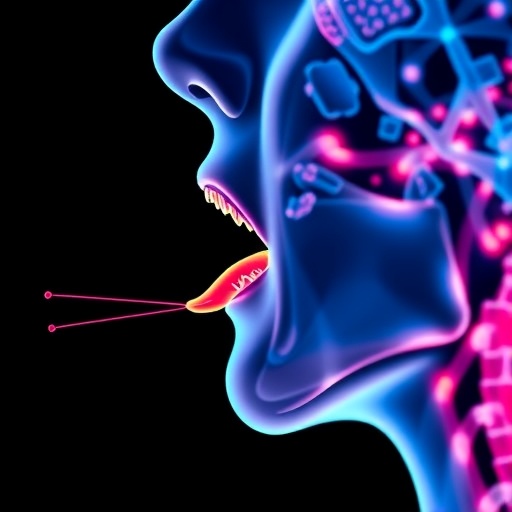In a groundbreaking advancement for oncological imaging, researchers have unveiled a sophisticated deep learning radiomics model leveraging MRI technology to enhance the accuracy of tongue cancer T-staging. This innovative approach integrates cutting-edge artificial intelligence techniques directly with magnetic resonance imaging data, promising to revolutionize how clinicians evaluate tumor progression and personalize treatment strategies for affected patients.
Tongue cancer, a primarily aggressive malignancy within the oral cavity, requires precise staging to guide therapeutic decision-making and predict prognosis effectively. Traditional radiomics models have contributed valuable insights by quantifying tumor characteristics from medical images, yet they often suffer from limitations linked to subjective interpretation and constrained feature selection. Addressing these challenges, the newly developed deep learning models harness the power of convolutional neural networks to extract more complex, high-dimensional feature representations from MRI scans, specifically from T2-weighted and contrast-enhanced T1-weighted sequences.
The researchers retrospectively analyzed clinical and imaging data from a substantial cohort of 579 tongue cancer patients treated at Xiangya Cancer Hospital and Jiangsu Province Hospital. MRI scans underwent rigorous preprocessing steps including anonymization, resampling, and calibration to ensure consistency and reliability. Expert radiologists meticulously delineated regions of interest on the images to facilitate feature extraction, achieving excellent interobserver agreement, as reflected by an intraclass correlation coefficient exceeding 0.75.
A total of 2,375 radiomics features were initially extracted using the PyRadiomics platform, encompassing diverse image descriptors such as texture, shape, and intensity-based measures. To translate this voluminous data into clinically actionable insights, the team deployed two deep convolutional neural network architectures—ResNet18 and ResNet50—building models termed DLRresnet18 and DLRresnet50, respectively. These models were benchmarked against a conventional radiomics model optimized with a curated set of 17 most informative features.
The performance metrics demonstrated remarkable advancements with the deep learning frameworks. In the training cohort, DLRresnet18 and DLRresnet50 achieved area under the receiver operating characteristic curve (AUC) values of 0.837 and 0.847, outpacing the traditional radiomics model’s score of 0.828. Crucially, these results generalized robustly to an independent test set and a separate external validation set, with AUCs maintaining superior performance (DLRresnet18: 0.805 / 0.857; DLRresnet50: 0.810 / 0.860). This consistency underscores the models’ potential clinical utility beyond the initial training environment.
Beyond AUC, the decision curve analysis affirmed the clinical value of these models by demonstrating higher net benefits across a range of threshold probabilities compared to traditional radiomics. Moreover, statistical metrics such as net reclassification improvement (NRI) and integrated discrimination improvement (IDI) confirmed that the deep learning models significantly enhanced patient risk stratification, strongly supporting their superiority in predicting tumor staging.
One of the critical advantages of DLRresnet18 and DLRresnet50 lies in their reduction of subjective interpretation variability, a prominent limitation in conventional imaging assessments. By automating feature extraction and learning hierarchical image patterns, these models minimize human bias and enable more reproducible diagnostic decisions, facilitating more precise and individualized treatment planning.
The integration of deep learning with radiomics represents a paradigm shift in medical imaging. It harnesses the strengths of machine learning for high-throughput data analysis while preserving the rich spatial and textural information that MRI provides. This dual capability offers a more nuanced understanding of tumor heterogeneity, infiltration depth, and microenvironmental changes which are pivotal for accurate T-staging.
From a translational perspective, the deployment of such AI-driven models could expedite clinical workflows, reduce diagnostic delays, and potentially diminish reliance on invasive procedures like biopsies solely for staging purposes. Furthermore, these tools could serve as decision-support systems, empowering clinicians with quantitative evidence to tailor therapies suited to individual tumor biology and progression.
Notably, the study exemplifies successful collaboration across institutions and expertise domains, combining oncological insights with computational prowess. It highlights the importance of multi-disciplinary approaches in advancing precision medicine and underscores how large multicenter datasets enhance model generalizability and robustness.
Nonetheless, the investigators acknowledge certain limitations, including the retrospective design and the need for prospective studies to validate the models in real-world clinical settings. Also, the incorporation of additional imaging modalities and multi-omics data could further refine model accuracy and clinical applicability.
Looking forward, this research lays foundational work for broader applications of deep learning radiomics across other head and neck cancers and malignancies where staging remains challenging. The methodologies developed here could catalyze innovations in tumor characterization, monitoring response to treatment, and predicting outcomes more accurately than existing imaging paradigms.
In sum, the advent of deep learning-based MRI radiomics marks a significant milestone that not only advances the frontier of tongue cancer diagnosis but also reshapes the future landscape of oncologic imaging. By transcending traditional analytical boundaries, this approach heralds an era where artificial intelligence and medical imaging converge to unlock deeper insights into cancer biology and improve patient care outcomes.
As artificial intelligence continues to integrate into clinical practice, the implications of studies like this one extend beyond technology, influencing economic, ethical, and regulatory dimensions of healthcare delivery. Ensuring transparent, interpretable, and equitable deployment of such tools will be paramount to maximize benefits while safeguarding patient trust.
The confluence of AI and radiomics holds transformative potential—enabling earlier detection, more accurate disease staging, and personalized treatment regimens that together could substantially enhance survival and quality of life for patients afflicted by tongue cancer and beyond. Researchers and clinicians eagerly anticipate future trials and technological refinements that will bring these promising innovations from bench to bedside.
Subject of Research: Deep learning-based MRI radiomics for tongue cancer T-stage differentiation.
Article Title: Deep learning radiomics based on MRI for differentiating tongue cancer T – staging.
Article References:
Lu, Z., Zhu, B., Ling, H. et al. Deep learning radiomics based on MRI for differentiating tongue cancer T – staging. BMC Cancer 25, 1358 (2025). https://doi.org/10.1186/s12885-025-14627-6
Image Credits: Scienmag.com




